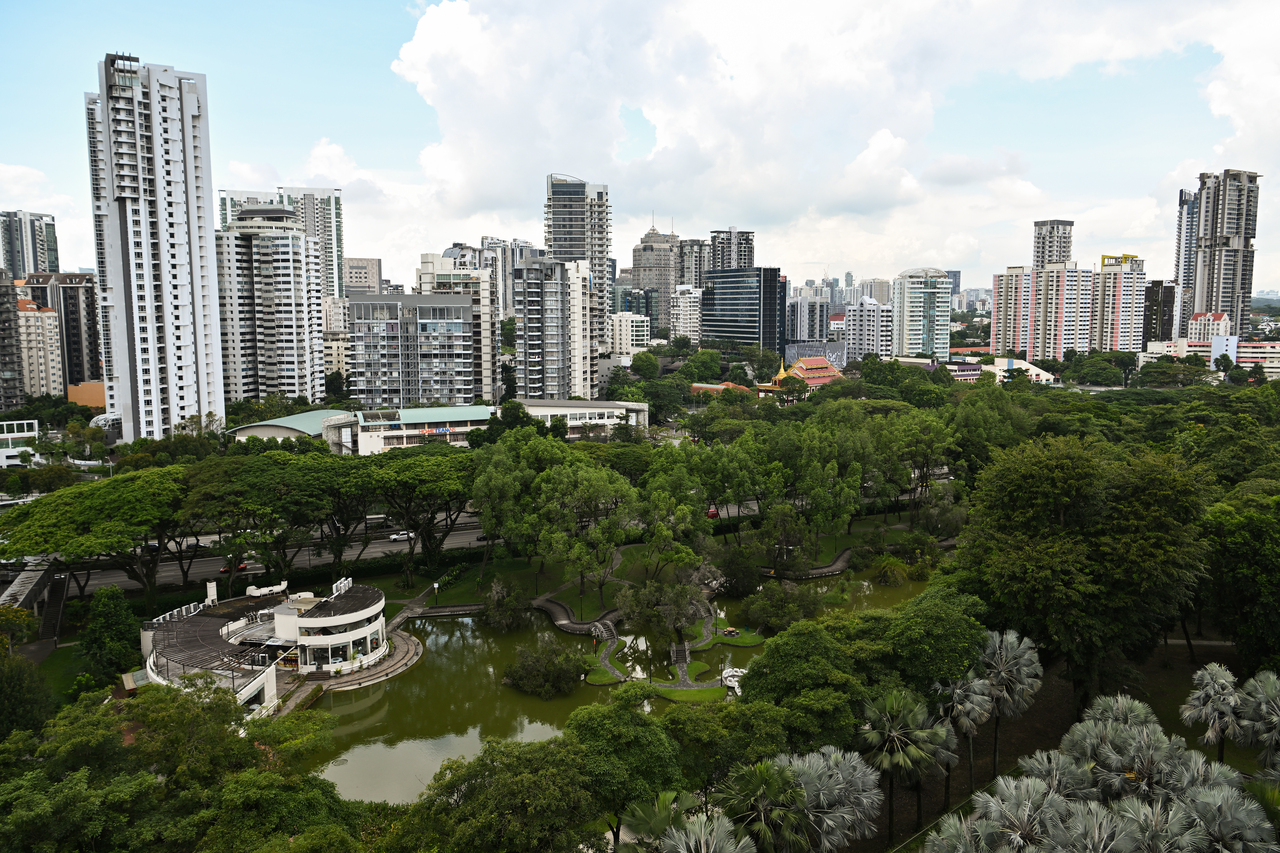Workspaces near home, vibrant CBD, flexible land use among strategies for S'pore's future
Sign up now: Get ST's newsletters delivered to your inbox

URA will work with agencies to refine these strategies and translate them into more detailed plans for Singapore's development.
ST PHOTO: LIM YAOHUI
Follow topic:
SINGAPORE - Having workspaces near home, short-term lease sites and a more vibrant central business district (CBD) are among the strategies that can shape Singapore's future as a place to work.
These ideas were brought up on Saturday (April 9) by the Urban Redevelopment Authority (URA) in a discussion with 200 members of the public on guiding Singapore's long-term land use and infrastructure development.
They include proposals on the future of work and the future of mobility in Singapore, such as creating a car-lite environment and being flexible with spaces like having urban farms and using underground and sea spaces.
URA will work with agencies to refine these strategies and progressively translate them into more detailed plans to guide Singapore's physical development over the next few decades, it said.
Second Minister for National Development Indranee Rajah, who chaired the virtual dialogue alongside URA chief executive Lim Eng Hwee, said: "Long-term planning is part of Singapore's DNA. By mapping out land and infrastructure requirements in advance, we can better steward our scarce land resources and cater to diverse needs.
"We also continuously review and adjust our plans along the way to capture new opportunities and address new challenges. Most importantly, being far-sighted helps our city develop sustainably, so we can realise the aspirations of not just our current generation but also future ones."
Conducted once every 10 years, the review aims to gather views to guide land use plans over the next 50 years and beyond. The year-long review, which has four phases, is expected to be completed this year.
In the review, URA said it would expand decentralisation efforts to inject more workspaces near homes, with greater flexibility and mixed uses.
These job nodes throughout Singapore should be vibrant and attractive for companies and employees, even outside work hours.
This means that in the future, it could be possible for more types of work areas to be integrated with a mix of residential and commercial uses.
Co-working spaces can also be integrated within the community to cater to the new hybrid and flexible work trends, URA added.
It is also studying the idea of introducing commercial sites with shorter leases.
"This will provide businesses with more flexibility, allowing spaces to support evolving business operations. This will help our city adapt to fast-changing economic trends," said Ms Indranee. "Shorter leases will allow us to respond to future uncertainties more nimbly."
But the CBD still has an important role to play in sustaining Singapore's economic competitiveness, even as it has to adapt to current times, she said.
"Hence, we will continue to rejuvenate the city centre and our CBD by injecting more mixed uses, including arts and culture programming," she added.
"At the same time, we will provide a greater variety of housing options to ensure it remains vibrant outside office hours."
Meanwhile, Singapore also has to be more people-centric in its urban spaces and encourage active mobility, Ms Indranee noted.
"We are constantly working to improve our urban design, to ensure that new housing towns encourage walking and cycling, with convenient access to amenities for all."
Existing spaces are being retrofitted, she added. For instance, the Land Transport Authority launched a six-month trial to enhance walkability in the Tiong Bahru area last month, with Seng Poh Road, Eng Hoon Street and Lim Liak Street repurposed to create wider footpaths and more green spaces.

URA added that the Tengah Park District will be Singapore's first car-free town centre where roads will run underground, freeing up space at the ground level for retail and recreational use.
In the future, there might also be the widespread use of autonomous vehicles that can make travel safer and more efficient.
"The technology is still nascent, but its potential is exciting and thus worth exploring," said Ms Indranee.
Singapore has trialled its first driverless bus services that collect revenue on Jurong Island and in Science Park 2.
"We will continue to monitor these and other trials, and prepare the necessary infrastructure, regulations and digital systems so that they can be scaled up quickly and safely when they are ready," she added.
Other proposals to enhance land use include making use of vertical spaces for functions like urban farming and solar panels, URA added.
Underground space can also be used for infrastructure, utilities and storage, so that surface land can be freed up for more people-centric uses such as housing, parks and community spaces, it noted.
"In planning for the use of sea space, we will also consider possibilities to enhance our climate resilience to mitigate rising sea levels, and the need to minimise potential environmental impact on our coastal and marine biodiversity," it said.
The dialogue marked the third phase of URA's long-term plan review, after two phases of engaging Singaporeans to come up with aspirations and possible strategies for land use.
The strategies were developed based on the ideas and feedback collected from Singaporeans and stakeholders over the engagement sessions, as well as taking into account trends and challenges.
Some 15,000 Singaporeans have participated in the engagement efforts since URA launched the initiative in July last year.
Members of the public can sign up for the next dialogue session next Saturday at this website.

